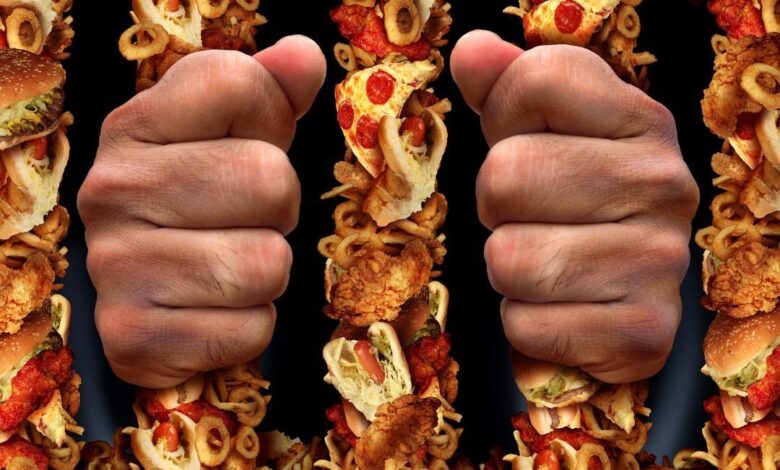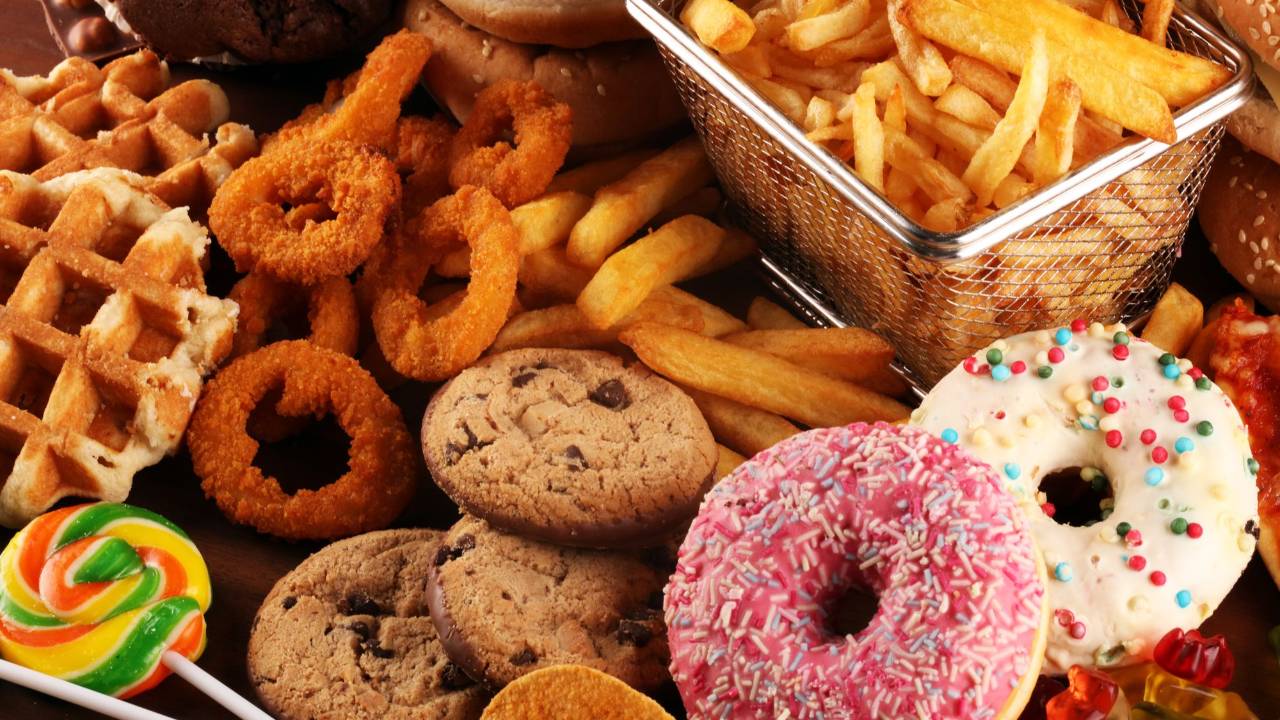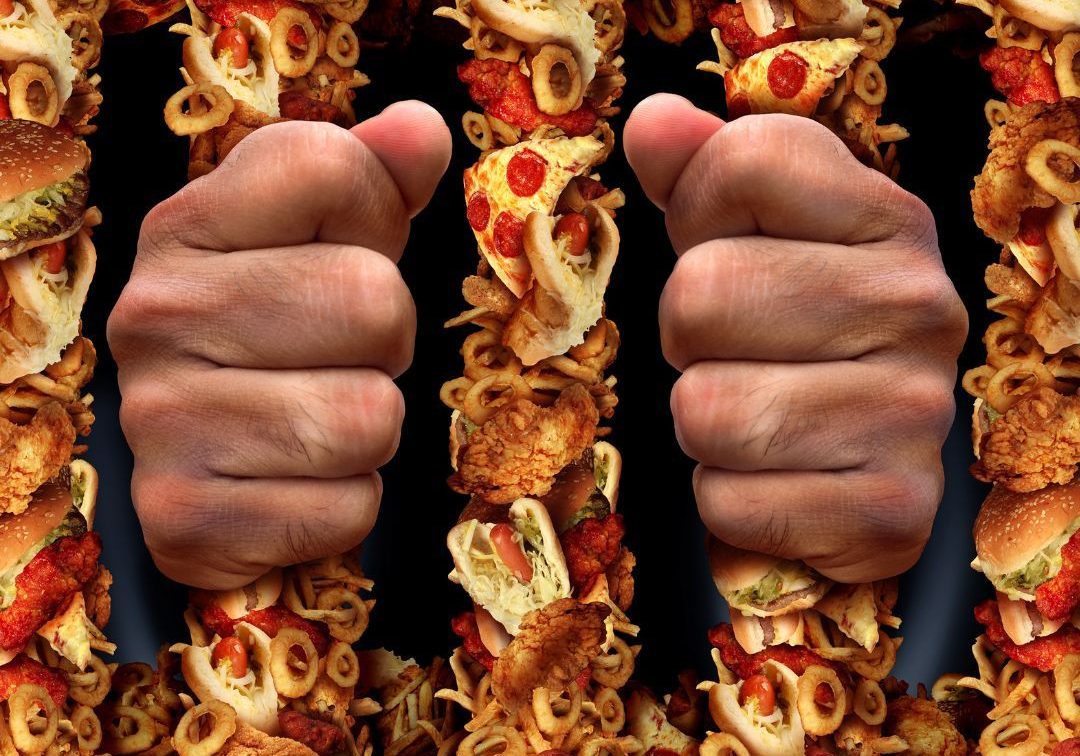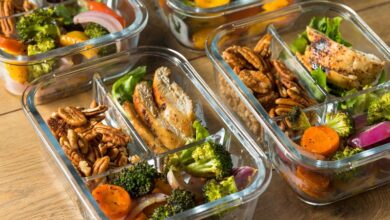
5 Steps to Take Control of Food Addiction
5 Steps to Take Control of Food Addiction: Food addiction, often overlooked, can have a profound impact on our lives. It’s not just about overeating; it’s about a deep, compulsive desire for certain foods, regardless of the consequences. This can lead to emotional distress, physical health problems, and strained relationships.
But the good news is that you can break free from this cycle and reclaim control of your relationship with food.
This journey involves understanding the root of your food addiction, identifying triggers, and developing healthy habits. It’s about recognizing the emotional and psychological factors that contribute to your cravings and learning how to manage them. By taking these steps, you can embark on a path toward healthier eating, improved well-being, and a sense of empowerment.
Understanding Food Addiction

Food addiction is a complex issue that can significantly impact a person’s health and well-being. It’s not simply about enjoying food; it’s about losing control and experiencing intense cravings, even when you know it’s harming you. Understanding the difference between regular overeating and food addiction is crucial for effective treatment and recovery.
Taking control of food addiction can be a challenging journey, but it’s definitely possible! One helpful step is to explore new, healthier recipes that satisfy your cravings without triggering unhealthy habits. For example, these mushrooms brussels sprouts tofu grain bowls are packed with flavor and nutrients, offering a delicious alternative to processed foods.
Remember, finding healthy, satisfying meals is a key part of building a sustainable relationship with food.
Distinguishing Between Overeating and Food Addiction
While overeating is a common occurrence, food addiction is a distinct condition. The key difference lies in the level of control and the impact on your life.
- Overeatingis often driven by external factors like stress, boredom, or social situations. It can be managed with conscious effort and does not significantly disrupt your life. You can typically stop eating when you feel full.
- Food addiction, on the other hand, is characterized by an intense craving for specific foods, often high in sugar, fat, or salt. This craving can be overwhelming, making it difficult to control your intake. You may experience withdrawal symptoms like irritability, anxiety, or fatigue when you try to abstain.
Food addiction can lead to significant weight gain, health problems, and social isolation.
Food Triggers: Identifying the Culprits
Food triggers are specific situations, emotions, or environments that can trigger intense cravings and lead to overeating or binge eating. Identifying these triggers is crucial for developing effective coping mechanisms.
Taking control of food addiction is a journey, not a sprint. It’s about building healthy habits, and that includes being mindful of what you eat, especially during the summer months. Check out these healthy eating tips for summer to keep in track to help you stay on track.
Remember, conquering food addiction is about making sustainable choices, and summer is a great time to experiment with new, healthy recipes and routines.
- Stress and anxiety: When you’re feeling stressed, your body releases cortisol, a hormone that can increase your appetite and cravings for comfort foods, often high in sugar and fat.
- Boredom and loneliness: Food can provide a temporary distraction from boredom or loneliness. This is especially true for individuals who lack other fulfilling activities or social connections.
- Emotional distress: Emotional eating is a common coping mechanism for dealing with negative emotions like sadness, anger, or frustration. Turning to food for comfort can provide a temporary escape from these feelings.
- Social situations: Certain social events, like parties or gatherings, can trigger overeating due to the availability of tempting foods and the pressure to socialize.
Emotional and Psychological Factors
Food addiction is often rooted in emotional and psychological factors. It can be a way of coping with underlying issues like:
- Low self-esteem: Food can provide a temporary boost to self-esteem, particularly for individuals struggling with body image issues or negative self-perceptions.
- Trauma and abuse: Past experiences of trauma or abuse can contribute to food addiction. Food can become a source of comfort and control in a chaotic or unpredictable environment.
- Depression and anxiety: Food can provide a temporary escape from feelings of depression and anxiety. It can also be a way of self-soothing or distracting oneself from negative thoughts.
Assess Your Relationship with Food

Understanding your relationship with food is crucial for overcoming food addiction. It’s not just about what you eat but why and how you eat. This step involves examining your eating patterns, emotional triggers, and the role food plays in your life.
Create a Food Journal
To gain insights into your eating habits, it’s essential to keep a food journal. This involves tracking your food intake, emotions, and potential triggers for a week. This process helps identify patterns and areas for improvement.
A food journal can be as simple as a notebook or a dedicated app. Record the time of each meal or snack, what you ate, how much you ate, and how you felt before, during, and after eating. Additionally, note any emotional triggers, such as stress, boredom, or sadness, that may have influenced your eating choices.
Taking control of food addiction is a journey, and finding healthy, satisfying alternatives is crucial. One of my favorite go-to recipes is the 250 calorie chicken cauliflower fried rice recipe , which packs in flavor and protein without the guilt.
It’s a great example of how you can enjoy delicious food while still managing your cravings and sticking to your healthy goals.
Analyze Your Food Journal
After keeping a food journal for a week, analyze the data to identify patterns and areas for improvement. Look for:
- Recurring themes:Are there specific foods or situations that consistently trigger overeating?
- Emotional eating:Do you turn to food for comfort, stress relief, or to cope with difficult emotions?
- Meal timing and frequency:Are you skipping meals or eating too frequently?
- Portion sizes:Are you consistently eating larger portions than necessary?
- Food cravings:What foods do you crave the most, and what triggers those cravings?
Design a Plan to Gradually Reduce Your Intake of Addictive Foods
Once you’ve identified patterns and areas for improvement, create a plan to gradually reduce your intake of addictive foods. This plan should be personalized and tailored to your specific needs and goals.
Start by making small, manageable changes. For example, if you crave sugary snacks, try replacing them with healthier alternatives like fruit or yogurt. Gradually reduce the frequency and quantity of addictive foods over time.
Develop Healthy Eating Habits
Developing healthy eating habits is a crucial step in managing food addiction. It involves shifting your focus from restrictive diets to a sustainable approach that nourishes your body and mind. This means creating a meal plan that incorporates nutritious and balanced meals, managing cravings with healthy snacks, and learning how to prepare satisfying and enjoyable meals.
Organize a Meal Plan
A well-organized meal plan provides structure and guidance, helping you make healthier choices throughout the day. It also ensures you’re consuming a balanced intake of essential nutrients.
- Include a variety of foods from all food groups: Aim for a balanced plate with fruits, vegetables, whole grains, lean protein sources, and healthy fats. This approach provides a wide range of nutrients your body needs to function optimally. For example, incorporating a serving of salmon with roasted vegetables and brown rice for dinner provides protein, omega-3 fatty acids, fiber, and vitamins.
- Plan your meals in advance: This helps prevent impulsive decisions and ensures you have healthy options readily available. Dedicate time each week to plan your meals and create a grocery list. Having a plan helps you avoid last-minute unhealthy choices and promotes a sense of control over your eating habits.
- Prepare meals in bulk: This is a time-saving strategy, especially during busy weeks. Cooking large batches of healthy meals allows you to have ready-to-eat options throughout the week, minimizing the temptation to reach for unhealthy alternatives.
Healthy Snack Options, 5 steps to take control of food addiction
Cravings are a common challenge when managing food addiction. Having a variety of healthy snack options readily available can help manage these cravings and prevent overeating.
- Fruits and vegetables: Apples, bananas, oranges, carrots, and celery are naturally sweet and satisfying options. They provide essential vitamins, minerals, and fiber, helping you feel full and energized.
- Nuts and seeds: Almonds, walnuts, pumpkin seeds, and sunflower seeds are packed with healthy fats, protein, and fiber. They can be enjoyed as a snack or added to yogurt, salads, or oatmeal.
- Yogurt: Choose plain yogurt and add your own fruit, nuts, or seeds for a healthy and satisfying snack. Yogurt is a good source of protein and calcium.
Prepare Satisfying Meals
Learning to prepare meals that are both satisfying and enjoyable is key to long-term success in managing food addiction. It’s about finding ways to cook healthy meals that you genuinely enjoy, reducing the temptation to seek unhealthy alternatives.
- Experiment with different flavors and cooking methods: Don’t be afraid to try new recipes and explore different cuisines. This keeps your meals interesting and prevents boredom, which can lead to unhealthy choices. For instance, grilling salmon with a lemon-herb marinade or roasting vegetables with spices can add exciting flavors to your meals.
- Incorporate your favorite flavors in healthy ways: If you crave sweet flavors, try adding fruit to your meals or using natural sweeteners like honey or maple syrup in moderation. If you love salty flavors, explore seasonings like herbs, spices, and garlic to enhance your dishes.
- Make meals visually appealing: Presentation matters! Arranging your food attractively can enhance your enjoyment and make it more appealing. Adding colorful vegetables, using different textures, and plating your meals creatively can make a difference.
Conclusion: 5 Steps To Take Control Of Food Addiction

Taking control of food addiction is a personal journey, and it requires patience, self-compassion, and a commitment to change. While it may not be easy, it’s certainly possible. By understanding the nuances of food addiction, developing healthy coping mechanisms, and seeking support when needed, you can create a fulfilling relationship with food that supports your overall well-being.
Remember, you are not alone in this journey. With the right tools and support, you can reclaim your health and happiness.






